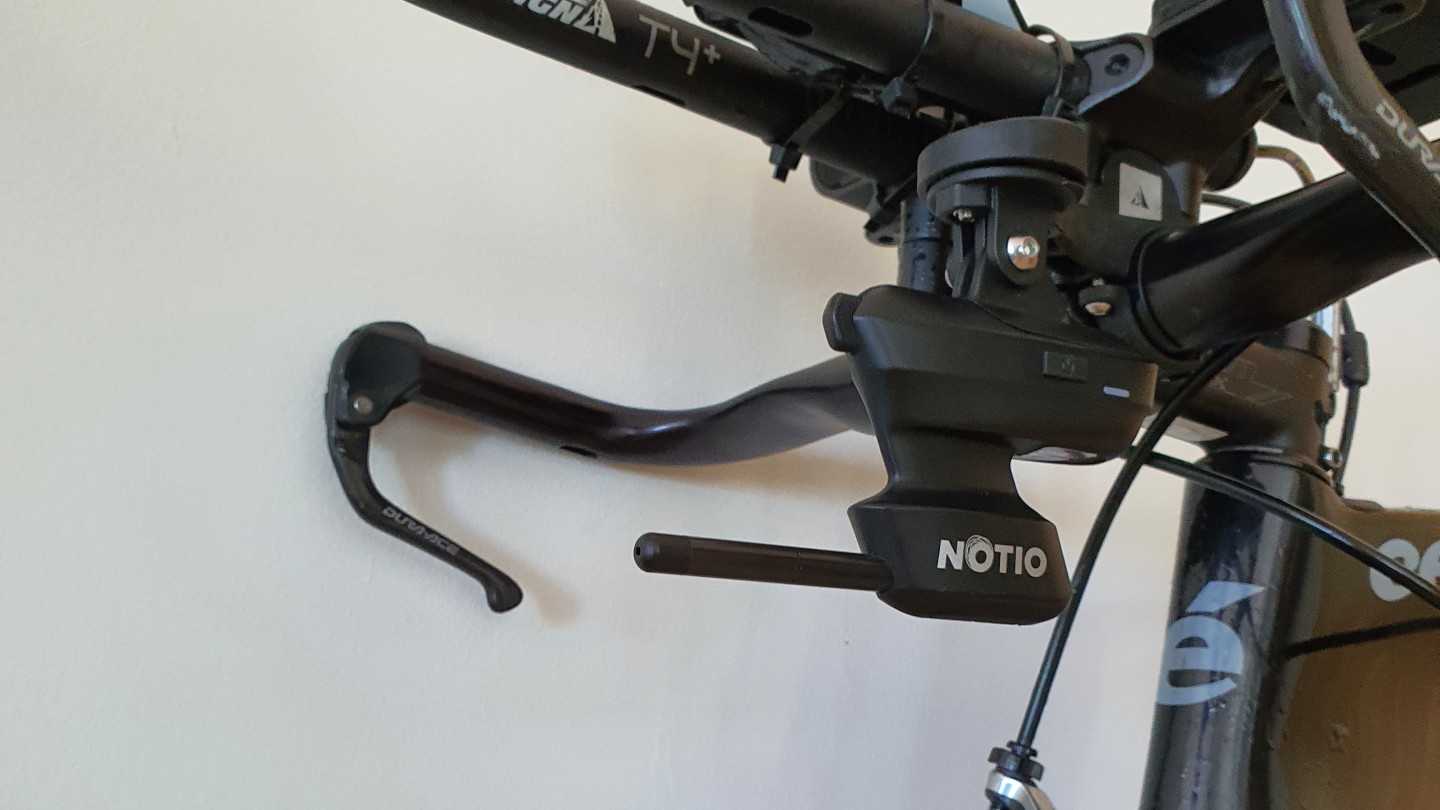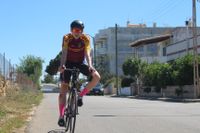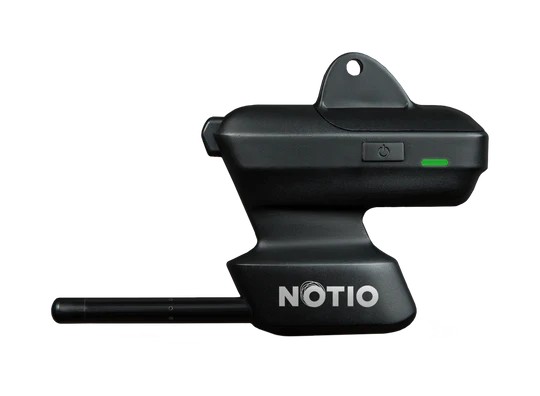Notio Aerometer review: the cost-effective alternative to wind tunnel testing?
For time triallists serious about aero optimisation, the Notio is a good investment - but to get the most out of it you need time as well as money

The Notio is a really fun bit of kit, crucial for any self-confessed aero-nerd. If you're looking to crack 20 for a 10-mile TT, or just looking to get as fast as possible, you need a Notio. It genuinely is like a pocket sized wind tunnel and Notio’s associated apps and data analysis is fantastic too. However, at a price of $600 or higher depending on territory, it's probably not worth it for the average rider.
-
+
Huge amount of reliable data
-
+
Fantastic data analysis from Notio's app
-
+
Lightweight
-
+
Good battery life
- +
-
-
Tricky to fit to high-end TT bike cockpits
You can trust Cycling Weekly.

The Notio Aerometer is a device you attach to the front of your bicycle and it measures how aerodynamic you are. These kinds of devices are relatively new to the market, only coming about in the last couple of years and have opened up aerodynamic testing to more people.
Getting your hands on this type of data in the past would’ve required a costly and time consuming trip to the wind tunnel. That is essentially what the Notio aims to do - strap a miniature wind tunnel to the front of your bicycle.

The Notio measures an accurate and repeatable value for the product of our coefficient of drag and frontal aero - essentially trying to measure just how aero we are. This sounds relatively simple but aerodynamics are complicated and air passing over us behaves in a strange way so creating a device small enough that it can be strapped to a bicycle but good enough to get repeatable measurements is no mean feat.
Notio Aerometer: construction
The device itself is a small black pod with a bike computer-sized mount. The Notio sits on a platform on this mount which can be rotated - this means there’s a little more flexibility as to where it can be mounted on the front of a bike. This can be useful in two circumstances - when looking to optimise the front end of a TT bike or when looking to strap it to a bike with non-standard bars, many time trial front ends aren’t particularly amenable to bolting devices on - especially high-end ones.
Notio claims a battery life of up to 12 hours while recording. During the test sessions that we’ve done with this, it’s not run out of charge yet. I have seen data from some long time trials measured from this device, though I avoid doing long time trials myself at all costs. The battery is charged with a standard miniature USB cable.

The only difficulty we had when testing with the Notio was finding ways to strap it to high-end time trial bikes. Non-standard and oddly shaped tubes are commonplace here and a few more mounting solutions from Notio would be welcome.
The Notio connects to its own app and to Garmin head units. Currently, the device doesn’t connect to other brands of head unit. Upon speaking to Notio about this, it’s something they want to do but it’s not always simple when it comes to third-party apps with other brands. An Android friendly mobile app would also be helpful.
The latest race content, interviews, features, reviews and expert buying guides, direct to your inbox!
The ride
It’s fair to say that this device is not the most user friendly thing on earth and it does take a bit of getting used to. With any scientific device, whether it’s an oscilloscope in an optics lab or an aeropod, the first step is always to try and measure the same thing twice. If you can’t repeat measurements, there’s no point. The thing I learned using the Notio, and this isn’t really a fault of the device, is that this is highly dependent on the rider. It takes an obscene amount of bodily awareness to complete two runs and get two CdA values close enough together to call ‘the same’.
However, once you’ve got used to using the device, the wealth of information you’re able to obtain from it is unreal. If you’re a serious time triallist, perhaps looking to crack 20 for a 10-mile TT, or just looking to get as fast as possible, you need a Notio. It genuinely is like a pocket sized wind tunnel and Notio’s associated apps and data analysis is fantastic too.
The device you use is part of the measurement and the important thing is consistency across runs rather than the actual number itself. With a power meter this is less of a problem as measuring power is a pretty simple cross product of force and angular velocity, but aero measurements require you to measure so many things that matching a CdA on the road, track and wind tunnel is very tricky, and not necessarily a goal worth aiming for in all cases.
In terms of usability, we achieved good measurements on a long out-and-back stretch and a loop on a calm day. With CdA measurements you tend to get estimates to three significant figures (something like 0.24 for example). The Notio has been independently verified by a publication in the European Journal of Sports Science as being able to detect changes of ±1.2%, this was done in a velodrome. On the open road, we were able to measure consistently to within 6.7%.
Value and conclusion
The Notio comes in at $599 on their website but I can’t find one from a UK retailer for less than £700. Cyclepowermeters.com has it at £759.
Given the fact that the market is quite small due to the cutting-edge nature of aero sensor tech it’s hard to judge what the ‘right’ price is. In the next few years these sensors will be more common, which might well lead to a decrease in prices across the board. If you want an aero sensor today, the Notio is a solid option.
- Weight: 80g
- Mounting system: 360 degree mounting across two axes
- Sensors: pitot tube, barometer, 3-axis accelerometer, gyroscope, hygrometer, thermometer

Tom Epton is a freelance writer and data scientist. Originally training as a scientist after completing his studies in physics he realised that cycling was what he wanted to spend his life thinking about. Now he works with manufacturers, athletes and teams using cutting edge data science methods to find performance gains. Tom writes primarily about sport-science and tech!